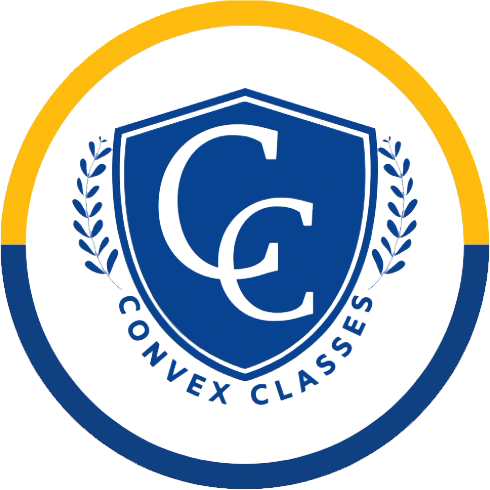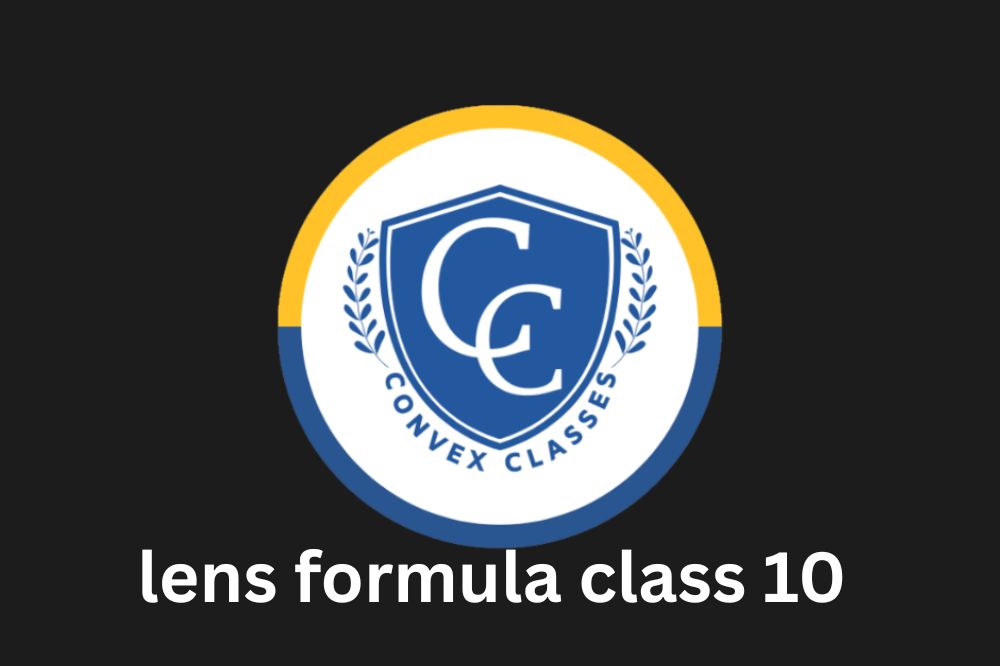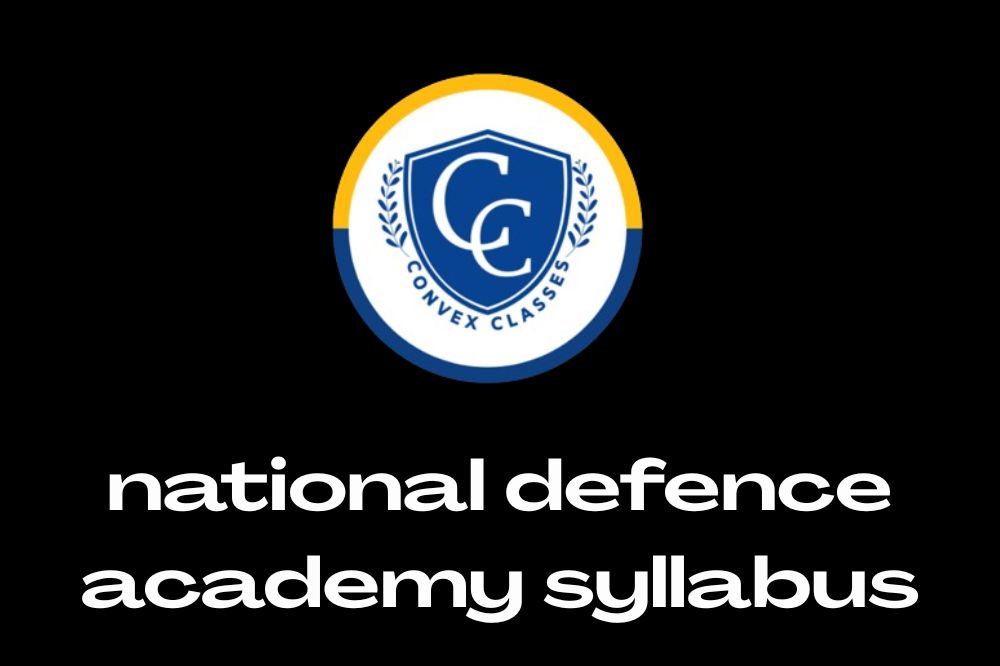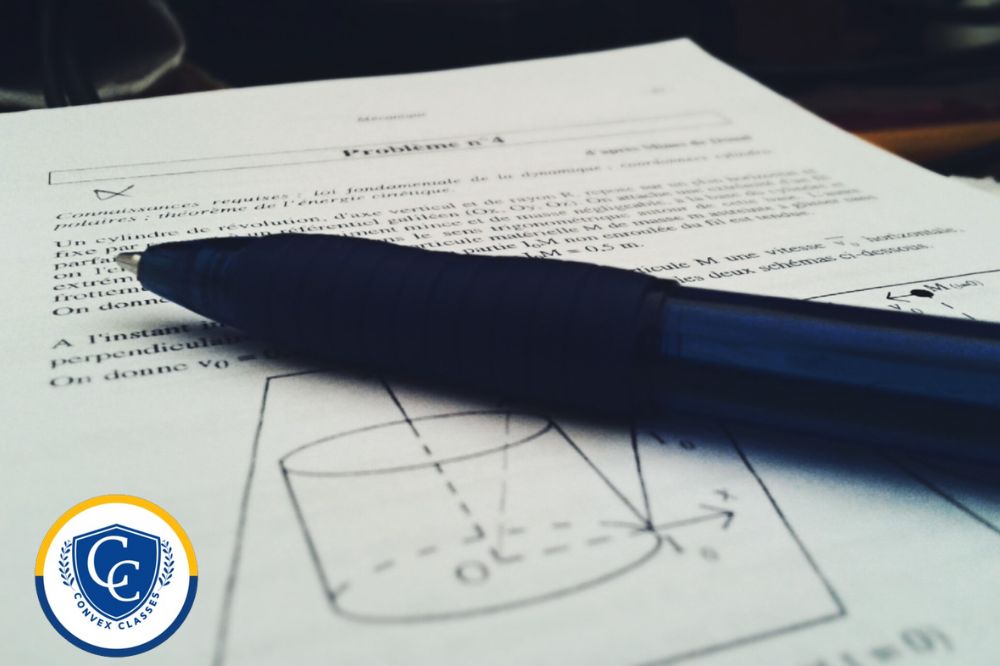The lens formula is one of the most important concepts in optics. It is used to establish the relationship between the object distance, image distance, and focal length of a lens. Whether you’re studying convex or concave lenses, this formula is crucial for understanding how lenses create images in practical applications like cameras, eyeglasses, and microscopes.
What is a Lens?
A lens is a transparent optical device that refracts light rays as they pass through it. Based on their shape, lenses can be classified as:
- Convex Lens (Converging Lens): Thick at the center and thin at the edges. It converges light rays to a focal point.
- Concave Lens (Diverging Lens): Thin at the center and thick at the edges. It diverges light rays away from the focal point.
Lens Formula: Definition (class 10th)
The lens formula is given as:
1/f = 1/v – 1/u
Where:
- f = Focal length of the lens
- v = Image distance from the lens
- u = Object distance from the lens
Key Point: The sign convention for distances (positive and negative) plays a critical role in calculations. Understanding this convention is essential for applying the lens formula accurately.
Sign Convention in Lens Formula
In optics, specific rules are followed to determine the signs of distances. For lenses, they are:
- Object Distance (u): Always negative, as objects are placed to the left of the lens.
- Image Distance (v):
- Positive for images formed on the opposite side of the lens (real image).
- Negative for images formed on the same side as the object (virtual image).
- Focal Length (f):
- Positive for convex lenses.
- Negative for concave lenses.
Derivation of the Lens Formula
The lens formula is derived using the geometry of light rays and the principle of refraction. Consider a convex lens forming an image of an object:
- Let an object be placed at a distance u from the optical center of the lens.
- The lens refracts the light rays, forming an image at distance v from the lens.
- Using the principles of similar triangles and the lens’s geometry, the lens formula is mathematically derived.
Note for Class 10 Students: The derivation may involve drawing diagrams with proper labeling of focal points, distances, and refraction paths. Consult your textbook for the step-by-step process.

Applications of Lens Formula
The lens formula has diverse real-world applications:
- Magnifying Glass: Convex lenses magnify objects for better visibility.
- Eyeglasses: Concave or convex lenses correct vision defects like myopia and hypermetropia.
- Microscopes and Telescopes: Lenses are used to focus and magnify images of tiny or distant objects.
- Cameras: Convex lenses focus light onto the film or sensor to produce sharp images.
Solved Examples
Example 1: Convex Lens
Given: An object is placed 20 cm from a convex lens with a focal length of 10 cm. Find the image distance (v).
Solution: We need to find the image distance, v. Plugging the given values into the lens formula:


Example 2: Concave Lens
Given: An object is placed 30 cm from a concave lens with a focal length of -15 cm. Find the image distance (v).


FAQs
Q1. What is the difference between the lens formula and the mirror formula?
A1: The lens formula relates the focal length, image distance, and object distance for lenses, while the mirror formula applies to spherical mirrors.
Q2. Why is the focal length positive for convex lenses?
A2: Convex lenses converge light rays, forming a real focus on the opposite side of the lens.
Q3. Can the lens formula be applied to both convex and concave lenses?
A3: Yes, but the sign convention varies. Convex lenses have positive focal lengths, while concave lenses have negative focal lengths.
Q4. What happens when the object is placed at the focus of a convex lens?
A4: The rays become parallel after refraction, and the image is formed at infinity.
Conclusion
The lens formula is a vital tool in optics, helping students understand the relationship between object distance, image distance, and focal length. By mastering this formula, Class 10 students can solve numerical problems, explore practical applications, and strengthen their concepts for future studies in physics.
Want to learn more? Connect with Convex Classes Jaipur, where expert faculty and engaging visuals make even complex topics easy to understand!




